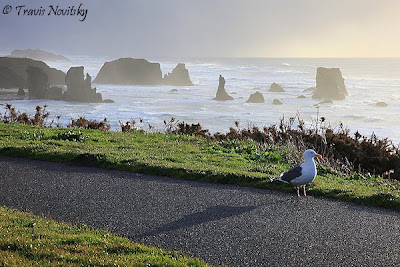Much of the ideas you read here frommy own climbing came early on as I and my partners weretesting our own limits as young men. The climbs I aspired to then are still the climbs I aspire to do now.Ice and mixed climbs generally nothigher than 6000m. More typically less,at around4500m. That covers most of the alpine faces in Alaska, theCanadian Rockies and the Alps.
Some how I am not surprised that the same discussions ingear choiceswe had in the'70s are the same discussions we are having today. Frozen feet and frost bite in single boots have brought us the warmestdouble boots ever made. But may be not the best double boots ever made. High tech clothing, insulation and fabrics are exceptional now . But the designs and products you can buy off the shelf may not be the best designs for climbing. Designs intentionally must do multi tasking as ski, snowboarding and climbing clothing."Climbing designs" being the last in line generally as the smallest consumer group.
Long gone are the days when most serious climbers owned a sewing machine and actually knew how to use it!
Tasker and Renshaw did a number of first British and first British winter ascents in the Alps from the mid '70s on. Including a winter ascent of the Eiger in 1975. There were others that were just asimpressive at the time asthe Eiger. Both went on to succeed on bigger climbs. The climbs are the same.Our gear has gotten better. I would be hard pressed to say we as climbers have gotten better. Certainly our imaginations have grownas have our capabilities.
A lot has changed in alpine climbing over the last 35 years. Including the weather. It is generally warmer. But much of the basic challenge has stayed the same as well, which is why winter alpine climbingstill interests me..
This article is from the August/September 1975issue of MOUNTAIN LIFE.

Jonathon Griffith photo @ http://www.alpineexposures.com/
One Man's Gearby Joe Tasker (1948-1982)
"Are you taking your long-johns?"
The author of the "Wall in Winter", an account of his seven-day epic on the Eigerwand with Dick Renshaw, featured in MOUNTAIN LIFE 20, will need no introduction to readers. Here Joe Tasker presents his own personal likes and dislikes in Alpine equipment.
Even after years of practice I still find that before an Alpine route the same questions about clothing and equipment get asked: 'Are you taking your "long-johns"?'
'No, I've got my overtrousers. They'll do just as well. How many jerseys have you got?'
'Just one spare.'
And so it goes on, the ceaseless evaluation of weight against eventuality; the number of krabs and pegs estimated in accordance with the difficulty of the climb and then whittled down to a manageable load. Each time it all needs rethinking and there is no guarantee that one has chosen the right combination and amount of clothing and equipment until one is back safely off the mountain. But some things can be seen to be more useful and better suited to Alpine climbing than items of clothing and equipment currently in use. One of the most awkward pieces of clothing that many people wear are those much praised thick, woollen breeches [I think Americans call them knickers]. They are meant to be warm even when wet, but in practice they tend to be too warm and uncomfortable when it is hot, and when it is cold the snow sticks to the wool, melts from the body warmth and freezes into an icy armour-plating, stiff to walk or move in and storing up moisture to melt later in the warmer surroundings of a hut or bivouac. Much more sensible - but much more expensive and not readily available - is a salopette. This is a chest-high trouser with sewn-in braces; for climbing the leg of the salopette ends low down on the calf and for skiing it is ankle-length. The design is excellent; the height of the 'waist' virtually eliminates the cold spots which can develop there from jersey and shirt getting separated from breeches. The length of the leg cuts out the cold spot below the knee where gaiters and breeches often part. On top of that the material dries readily if it does get damp and consequently does not freeze solid. The material is a stretch fabric, not completely waterproof but, more importantly, snow does not adhere to it. Skiers have been used to much more sensible material for dealing with snow for years but I wouldn't recommend rushing out and buying a climbing salopette derived from the ski salopette, even if you can find any on sale. They were retailing last year in Chamonix at £27 per pair!
As with so many articles of clothing the salopette can be readily made from materials obtainable in many big stores or by mail order. It only requires a bit of patience and a few hours with a sewing machine.
It is difficult, however, to compromise on footwear. Even for summer climbing in the Alps double boots seem to be the best thing. This may simply be a reflection of the sort of climbs that Dick Renshaw and myself have been doing over the last few years, but we have done some hard rock routes in 'doubles' too - such as the Walker Spur and the Bonatti/Gobbi route on the Eckpfeiler. At first it wasn't through choice that we climbed such routes in doubles but because they were the only boots we had. Although such routes were quite trying in doubles the boots came into their own on mixed climbs. We rarely experienced cold feet on stances and once survived a whole night on the Dent Blanche North Face standing up on a step cut in the ice, unable even to take our crampons off, never mind slacken our boots (as the books advise). Although we had to wiggle our toes to make sure they were still there we never had the slightest trace of frost-bite afterwards.
Except for the Galibier Hivernales, most double boots seem similar in their warmth-retaining properties and clumsiness; my own are Harlin Leroux, which don't seem to be made anymore. There isn't a lot one can say about krabs, nuts, slings and pegs, except that we British climbers seem to take far too many. Perhaps this is due to the habit of taking meticulous care to protect pitches on a British climb - a precaution which is out of place in the Alps, where protection is usually more straightforward and must be more rapidly arranged. Some of the 'super-strong' krabs on the market today seem to be too fat for ease of manipulation in awkwardly-placed pegs or where one wants to slip a piece of line or tape through the eye of the peg. I do not really think that there is any one set of equipment that is the answer; it depends on what you grow accustomed to. Of the various models of curved pick axes available Dick and I have been using Chouinard axes and hammers. At the time we got them there were few others available. In summer the combination of axe and hammer curved picking' seemed to work well, though Dick was justifiably apprehensive of his axe after the tip broke off on a winter climb in Scotland - an eventuality one dare not contemplate on a big ice route like the North Face of the Droites. When the ice is very hard, though, as it can be in winter, the Chouinard hammer is very unsatisfactory - the shaft being too short. This causes poor purchase in the ice due to the limited arc of swing and also damages the knuckles, even through Dachstein mitts. In very hard ice we were often making a Terrordactyl-type insertion movement, and that sort of axe/hammer might be more efficient on certain ground - but against that would have to be weighed its disadvantages on more general ground.
On the question of crampons I am undecided. I climbed a lot in a pair of Salewa adjustables which someone described as 'bent tin' and another lad, whose gear hadn't arrived in Chamonix, declined my offer to loan them to him until I said that they had taken me that year - amongst other climbs - up the North Face of the Eiger, Dent Blanche and Eckpfeiler. I didn't see them again for another six months and was consequently forced to buy another pair. I chose the Chouinards but didn't find myself on really difficult ground in them until a year later. Meanwhile Dick had used his on various hard climbs and was visibly startled one day on the camp-site when doing the ritual sharpening of the points to find fracture lines across both crampons; they subsequently came apart in his hands. A couple of weeks beforehand he had been on the North Face of the Col de Peuterey. They fractures must have occurred then.
It constantly surprises me to think of how much crampons do put up with and that the front points don't just buckle up.
As far as performance goes the 'bent tin' Salewa crampons seemed perfectly satisfactory, but I did feel that Dick had the advantage over me on the North Face of the Eckpfeiler, when we were climbing very steep ice for about 1500 feet and he was wearing the Chouinards. They do give very good support for front-pointing but after one or two unnerving moments on difficult mixed ground I've never really felt at home in Chouinard crampons where there is rock around. The more flexible crampon seems to mould itself to the contours of the rock and hold better.
The sharpening of crampon points is overdone in the Alps. When you think of how much rough ground you often cover before meeting the real difficulties of a climb it is quite clear that all the effort put into sharpening them - and quite a bit of steel - is lost. I felt the points of my crampons at the foot of the Eckpfeiler; they had been razor-sharp to start with but were more blunt than they had ever been - and that was just with the descent from the Trident bivouac hut, and Col Moore! I don't think the same holds true for axe and hammer.
The drive-in/screw-out ice screw is the most useful ice peg around. The oddly-shaped Salewa-type, however, tends to hold too well in very hard ice. It can take far too long to extract and precious time is wasted hacking it free from the ice or riskingmaking it unusable by warping or even snapping it while it is still tight. A much more manageable drive-in/screw-out is the Simond-type,which has a round, slightly tapering shaft with a fine thread. It seems to hold well and is extracted with a minimum of effort. However, in some ice the Salewa does hold better.
Finally a word about food. Sometimes our food seems to weigh a bit heavy but at least we know that what we have got is nourishing. Over several seasons we have evolved a bivouac menu that has nothing to do with dehydrated foods and soups - which seem to be the standby for many teams. Quite apart from any considerations as to whether there is actually any food value in the dehdrated stuff, it takes too much heating and cooking.
For soup we take bouillon cubes - a continental equivalent of Oxo - in various flavours. This is a meat extract, very tasty, and replaces a lot of the salt lost in the day's exertions. It only needs to be put into hot water and it's ready.Into that you can put polenta, a ground corn, easily obtainable abroad and far more nutritious than powdered potato (Hiebeler survived several days in winter living solely on heated-up polenta. You can also buy fairly cheaply big, fatty lumps of meat to cut up into the bouillon. This makes the 'soup' into a tasty concoction of real value.
These comments are not meant to be definitive but might suggest new possibilities and improvements. The End!
More here on Taker and Renshaw:
http://reference.findtarget.com/search/Joe%20Tasker/
http://en.wikipedia.org/wiki/Joe_Tasker
http://cc.bingj.com/cache.aspx?q=dick+renshaw&d=5037361146364964&mkt=en-US&setlang=en-US&w=54fd9b70,895d08b0
I'd like to thank IAN PARSONS for tracking down this article for me and making the effort to email it from England to the far side of the USA. The effort is much appreciated!
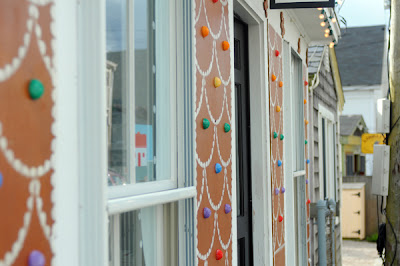


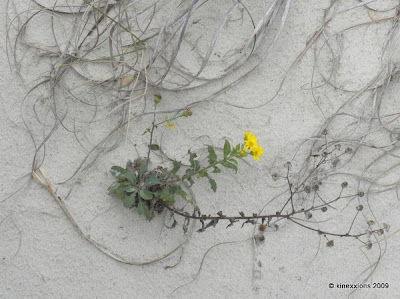 It seemed like a sudden change, from the brightness of the sand dunes to the darkness of a forest of strangely twisted and misshapen Live Oak trees. The change was startling and it took a little while for your eyes to adjust. But once your eyes adjusted, what they beheld was really quite magical.
It seemed like a sudden change, from the brightness of the sand dunes to the darkness of a forest of strangely twisted and misshapen Live Oak trees. The change was startling and it took a little while for your eyes to adjust. But once your eyes adjusted, what they beheld was really quite magical.
 I followed the trail through the Live Oak forest on to the Sea Camp Ranger Station and Dock. There was very little wind and the water was as smooth as glass.
I followed the trail through the Live Oak forest on to the Sea Camp Ranger Station and Dock. There was very little wind and the water was as smooth as glass.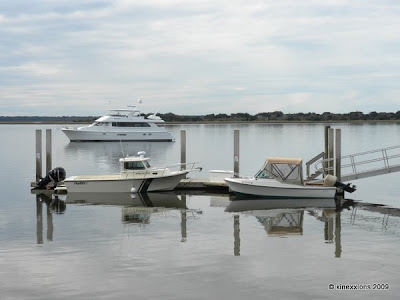 It was getting late, close to 4 o'clock, so I followed the River Trail, where I was surrounded by tall, large Live Oak trees, back to the Dungeness Dock. Quite a difference between these trees and the ones at Sea Camp. As I was walking, I kept hearing something moving around in the underbrush. It took a few minutes but I finally saw what was making the noise.
It was getting late, close to 4 o'clock, so I followed the River Trail, where I was surrounded by tall, large Live Oak trees, back to the Dungeness Dock. Quite a difference between these trees and the ones at Sea Camp. As I was walking, I kept hearing something moving around in the underbrush. It took a few minutes but I finally saw what was making the noise. The most common view I had was from behind as I watched it for a short time. It scurried around with its nose hidden in the ground, searching for the next delicious morsel. But for a few brief seconds, the Armadillo stopped and stood on its hind legs.
The most common view I had was from behind as I watched it for a short time. It scurried around with its nose hidden in the ground, searching for the next delicious morsel. But for a few brief seconds, the Armadillo stopped and stood on its hind legs. With my arrival back at the Dungeness Dock, my visit to Cumberland Island was nearly over. The sun was starting to go down and it was getting colder. Along with several other passengers I patiently awaited the arrival of the ferry. This time I opted for the comfort of the warm cabin area. It was standing room only inside but sore feet and legs were a small price to pay for a little warmth. 'Twas much better than sitting outside where it was cold and windy!
With my arrival back at the Dungeness Dock, my visit to Cumberland Island was nearly over. The sun was starting to go down and it was getting colder. Along with several other passengers I patiently awaited the arrival of the ferry. This time I opted for the comfort of the warm cabin area. It was standing room only inside but sore feet and legs were a small price to pay for a little warmth. 'Twas much better than sitting outside where it was cold and windy! In about two weeks I'll be going to Springfield, Missouri to attend the fourth reunion of the Descendants of Lysander and Lydia Robison Joslin (DLLRJ). Held every two years, the first DLLRJ reunion was in August .. in Springfield, Missouri. The picture at right is my mother and her sister, Pat, standing in front of "the wall" of descendants. Lysander and Lydia are my 3rd great-grandparents.
In about two weeks I'll be going to Springfield, Missouri to attend the fourth reunion of the Descendants of Lysander and Lydia Robison Joslin (DLLRJ). Held every two years, the first DLLRJ reunion was in August .. in Springfield, Missouri. The picture at right is my mother and her sister, Pat, standing in front of "the wall" of descendants. Lysander and Lydia are my 3rd great-grandparents.

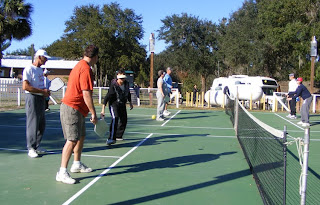


 Forget the Fendi Bicycle. It has been proposed that the first Italian designer bike was invented by Leonardo Da Vinci. The wooden construction above is a model "Da Vinci Bicycle", from an exhibition of the artist's inventions.
Forget the Fendi Bicycle. It has been proposed that the first Italian designer bike was invented by Leonardo Da Vinci. The wooden construction above is a model "Da Vinci Bicycle", from an exhibition of the artist's inventions. A bicycle-like sketch was discovered in 1974 during the restoration of the Codex Atlanticus and attributed to Da Vinci. Conferences were held about this discovery; academic articles written... until 1997, when the sketch was proven to be a 20th century forgery.
A bicycle-like sketch was discovered in 1974 during the restoration of the Codex Atlanticus and attributed to Da Vinci. Conferences were held about this discovery; academic articles written... until 1997, when the sketch was proven to be a 20th century forgery.





 With the dark clouds came strong winds, rain and snow.
With the dark clouds came strong winds, rain and snow.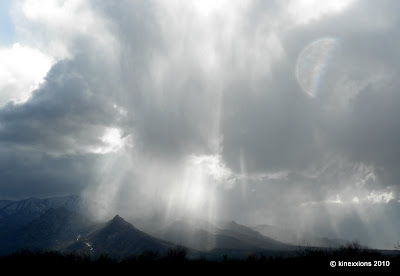 A close-up view of the mountains beneath those big gray clouds. This particular storm passed by quickly. But other storms and more wind came again during the night. It was a very restless night!
A close-up view of the mountains beneath those big gray clouds. This particular storm passed by quickly. But other storms and more wind came again during the night. It was a very restless night! In the morning we were greeted with sunshine, blue skies, and somewhat cooler temperatures. As I headed a few miles south toward Willcox and Chiricahua, I wondered what more Mother Nature could bring my way.
In the morning we were greeted with sunshine, blue skies, and somewhat cooler temperatures. As I headed a few miles south toward Willcox and Chiricahua, I wondered what more Mother Nature could bring my way.
 Jonathon Griffith photo @ http://www.alpineexposures.com/
Jonathon Griffith photo @ http://www.alpineexposures.com/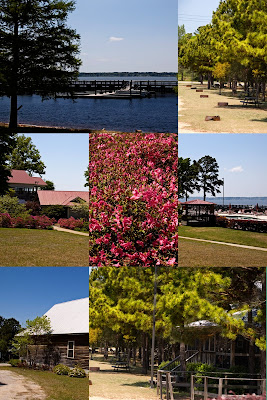 What had my heart singing with glee though was the pool area. There is a fish shaped pool. There is a pool that has the baby pool built into one end so you can watch your little one play while being in the deeper end yourself. There is a splash zone. And there is my all time favorite water park feature: a lazy river. I think I spent three or four heavenly hours in this part of the campground. With an hour or so of that time including me reading a book while floating on the lazy river. I may want to stay here forever.
What had my heart singing with glee though was the pool area. There is a fish shaped pool. There is a pool that has the baby pool built into one end so you can watch your little one play while being in the deeper end yourself. There is a splash zone. And there is my all time favorite water park feature: a lazy river. I think I spent three or four heavenly hours in this part of the campground. With an hour or so of that time including me reading a book while floating on the lazy river. I may want to stay here forever.


